
The Restoration Movement is a Christian movement that began on the United States frontier during the Second Great Awakening (1790–1840) of the early 19th century. The pioneers of this movement were seeking to reform the church from within and sought "the unification of all Christians in a single body patterned after the church of the New Testament."
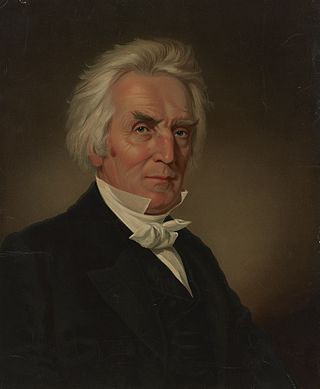
Alexander Campbell was an Ulster Scots immigrant who became an ordained minister in the United States and joined his father Thomas Campbell as a leader of a reform effort that is historically known as the Restoration Movement, and by some as the "Stone-Campbell Movement." It resulted in the development of non-denominational Christian churches, which stressed reliance on scripture and few essentials.
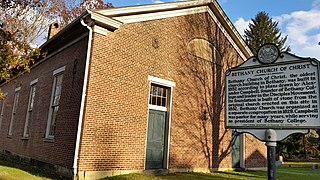
The Churches of Christ, also commonly known as the Church of Christ, is a loose association of autonomous Christian congregations located around the world. Typically, their distinguishing beliefs are that of the necessity of baptism for salvation and the prohibition of musical instruments in worship. Many such congregations identify themselves as being nondenominational. The Churches of Christ arose in the United States from the Restoration Movement of 19th-century Christians who declared independence from denominations and traditional creeds. They sought "the unification of all Christians in a single body patterned after the original church described in the New Testament."
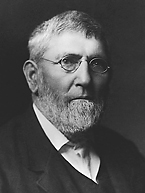
David Lipscomb was a minister, editor, and educator in the American Restoration Movement and one of the leaders of that movement, which, by 1906, had formalized a division into the Church of Christ and the Christian Church. James A. Harding and David Lipscomb founded the Nashville Bible School, now known as Lipscomb University in honor of the latter.
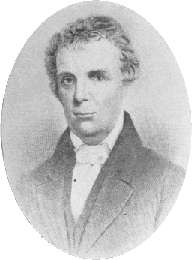
Barton Warren Stone was an American evangelist during the early 19th-century Second Great Awakening in the United States. First ordained a Presbyterian minister, he and four other ministers of the Washington Presbytery resigned after arguments about doctrine and enforcement of policy by the Kentucky Synod. This was in 1803, after Stone had helped lead the mammoth Cane Ridge Revival, a several-day communion season attended by nearly 20,000 persons.
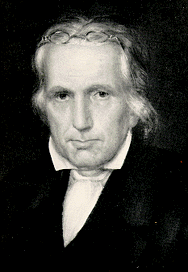
Thomas Campbell was a Presbyterian minister who became prominent during the Second Great Awakening of the United States. Born in County Down, he began a religious reform movement on the American frontier. He was joined in the work by his son, Alexander. Their movement, known as the "Disciples of Christ", merged in 1832 with the similar movement led by Barton W. Stone to form what is now described as the American Restoration Movement.
William Lipscomb was a figure of the American Restoration Movement and co-editor of the Gospel Advocate.

The Gospel Advocate is a religious magazine published monthly in Nashville, Tennessee for members of the Churches of Christ. The Advocate enjoyed uninterrupted publication since 1866 until the COVID-19 pandemic.
Robert Henry Boll was a German-born American preacher in the Churches of Christ. Boll is most known for advancing a premillennialist eschatology within the Churches of Christ, in articles written during his editorship of the front page of the Gospel Advocate from 1909 to 1915 and after 1915 in Word and Work, leading to a dispute which was a significant source of division within the Churches of Christ in the 1930s. Boll was one of the most influential advocates for the premillennial point of view, and was most singularly opposed by Foy E. Wallace Jr. By the end of the 20th century, however, the divisions caused by the debate over premillennialism were diminishing, and in the 2000 edition of the directory Churches of Christ in the United States, published by Mac Lynn, congregations holding premillennial views were no longer listed separately.
The Firm Foundation was a religious periodical published monthly in Houston, Texas, for members of the Churches of Christ. It was established in 1884 by Austin McGary. The Firm Foundation was, for the next hundred years, one of the two most influential publications among the Churches of Christ along with the Gospel Advocate.
Batsell Barrett Baxter was an influential preacher and writer within the Churches of Christ.
Word and Work is a religious journal associated with those Churches of Christ that hold to a premillennial eschatology. It was founded in 1908 by Dr. David Lipscomb Watson.
The Christian Association of Washington was an organization established by Thomas Campbell in 1809 to promote Christian unity. It was a study group that Campbell formed with like minded friends and acquaintances in the local neighborhood of Washington, Pennsylvania. The group sought to foster unity by focusing on a common form of Christianity that they could all agree upon. This charter that Campbell wrote for this group, the Declaration and Address of the Christian Association of Washington, became one of the most important early texts of the Restoration Movement.
The Christians (Stone Movement) were a group arising during the Second Great Awakening of the early 19th century. The most prominent leader was Barton W. Stone. The group was committed to restoring primitive Christianity. It merged with the Disciples of Christ (Campbell Movement) in 1832 to form what is now described as the American Restoration Movement (also known as the Stone-Campbell Restoration Movement.)
The Disciples of Christ (Campbell Movement) were a group arising during the Second Great Awakening of the early 19th century. The most prominent leaders were Thomas and Alexander Campbell. The group was committed to restoring primitive Christianity. It merged with the Christians (Stone Movement) in 1832 to form what is now described as the American Restoration Movement (also known as the Stone–Campbell Restoration Movement).
The Christian Chronicle is a religious newspaper associated with the Churches of Christ. The Chronicle has a "news not views" editorial policy. A survey conducted in the early 1990s found that 68 percent of ministers in the Churches of Christ read the Chronicle, and 88 percent of those readers said they agreed with the content. The Encyclopedia of the Stone-Campbell Movement describes the Chronicle as "by far the most-read paper in the Churches of Christ and [it] exercises an influence for cohesiveness in this part of the Stone-Campbell Movement".
The Christian Messenger was a religious magazine established by the early Restoration Movement leader Barton W. Stone in 1826. The paper was a key means of communication for the "Christians" led by Stone and a primary source of unity in the movement, but consistently struggled for survival. It also played a key role in promoting the merger of the "Christians" with the "Disciples" led by Thomas and Alexander Campbell.
The Mahoning Baptist Association was an association of Baptist churches that was established in 1820 in Ohio's Mahoning Valley. Two prominent early Restoration Movement leaders, Alexander Campbell and Walter Scott, were closely affiliated with the Mahoning Association. The Association was dissolved in 1830.
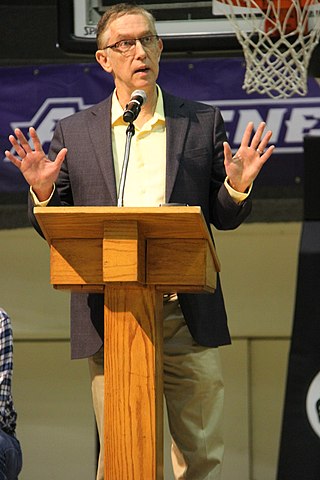
C. Leonard Allen is the Dean of Bible at Lipscomb University.
Gary Holloway is the executive director of the World Convention of Churches of Christ.








